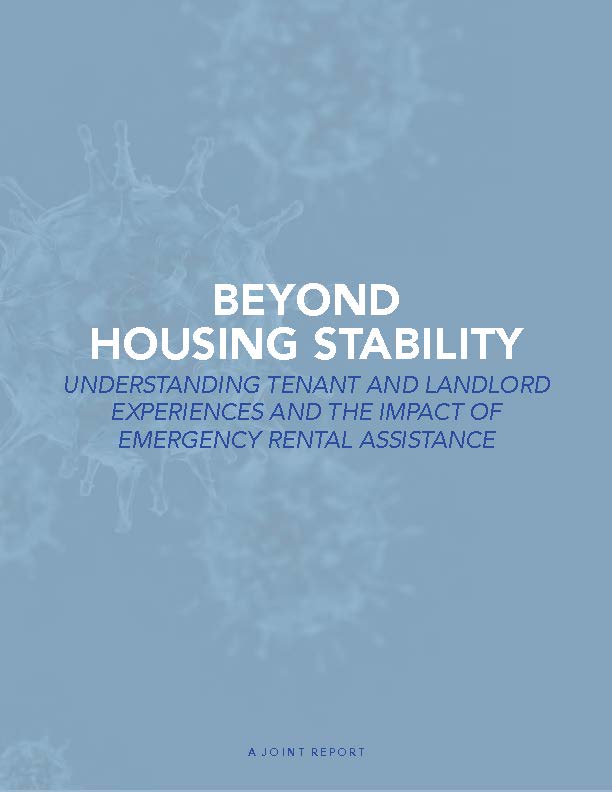NLIHC, the Housing Initiative at Penn (HIP), and the Reinvestment Fund (RF) released today a joint report on tenant and landlord experiences with the U.S. Department of the Treasury’s (Treasury) Emergency Rental Assistance (ERA) Program. The report, Beyond Housing Stability: Understanding Tenant and Landlord Experiences and the Impact of Emergency Rental Assistance, finds that Treasury’s ERA program offered a vital lifeline to tenants and landlords during the pandemic, improving outcomes in areas well beyond housing stability, including financial security, child well-being, access to healthcare, and overall health.
The new report uses administrative, qualitative, and survey data to evaluate how tenants and landlords experienced ERA in programs run at five sites around the country: Allegheny County, Pennsylvania; the City and County of Denver, Colorado; Louisville/Jefferson County, Kentucky; Northern Ponca Housing Authority; and the State of Oregon. Survey data from five additional program sites were used to strengthen the evaluation. In addition to describing the characteristics of renter households that applied for ERA through the study sites, the report illuminates the experiences of tenants who applied for ERA. These experiences include their likelihood of receiving assistance, housing stability, financial security, physical and mental health, access to healthcare, and child well-being.
The report shows that survey respondents who received support from the ERA program experienced more positive short-term outcomes than those who did not. Tenants who received ERA funding were more likely to be living in their own apartment or home (as opposed to living with family or friends or being unhoused), were less likely to owe back rent, and were less worried about their overall housing status at the time of the survey compared to tenants who did not receive funding. Likewise, after controlling for other factors like age, language, race, and ethnicity, tenants who received ERA were 40% more likely than those who did not receive assistance to report that their health and well-being were the same or better than a year ago. Landlords expressed in their focus groups that they also benefited from the program, explaining that they received invaluable support from ERA at a time when they were struggling to collect rents and meet financial obligations. Tenants and landlords felt that ERA provided essential support, stabilizing renter households in the short term and providing landlords with a degree of financial security.
The report provides suggestions for future housing stability programs as well as policy recommendations. The report recommends, for example, that state and local jurisdictions work to retain the infrastructure that was created during Treasury’s ERA program and incorporate emergency rental assistance as a part of the continuum of state and local housing assistance and homelessness prevention interventions. Likewise, HUD should investigate the effectiveness of flexibilities applied in the ERA program – such as self-attestation, fact-specific proxy, categorical eligibility, and direct-to-tenant assistance – in increasing the accessibility of these programs for tenants and landlords. The report concludes by urging Congress to enact a permanent emergency rental assistance program to help stabilize households experiencing sudden financial shocks before they result in eviction, instability, or homelessness.
Read the report at: https://nlihc.org/sites/default/files/2023-08/beyond-housing-stability.pdf

